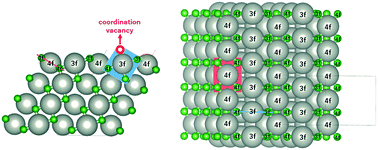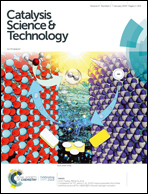Sulfation of a PdO(101) methane oxidation catalyst: mechanism revealed by first principles calculations
Abstract
PdO efficiently catalyzes the oxidation of methane but suffers tremendously from sulfur poisoning that lowers its catalytic activity. In this work, first principles calculations were performed to reveal the mechanism of PdO(101) sulfation and how the active sites for methane activation are altered upon the formation of SOy (y = 2 to 4) species on the surface. The results suggest that under typical experimental conditions with a high O2/SO2 gas ratio, the formation of SO4-decorated PdO(101) is favored and contributes significantly to the poisoning of PdO(101) as it blocks the coordinatively unsaturated Pd atoms that were identified to play a crucial role in the activation of methane. At a low temperature regime, SO2 oxidation forming SO3 and SO4 species is highly exothermic via the Eley–Rideal and Langmuir–Hinshelwood mechanisms but is limited by the high activation barrier for O2 dissociation. On the other hand, the Mars–van Krevelen mechanism has low exothermicity but provides facile elementary steps. From these results, insights into the design of PdO-based sulfur poisoning-resistant methane oxidation catalysts were drawn.



 Please wait while we load your content...
Please wait while we load your content...